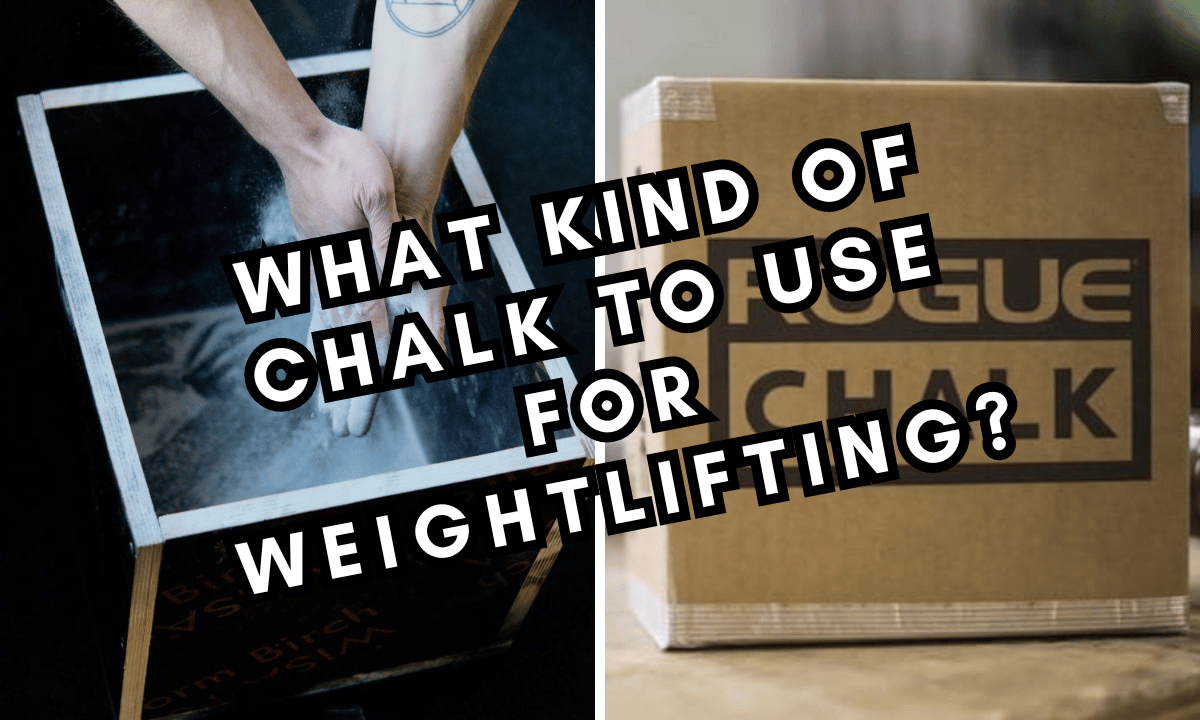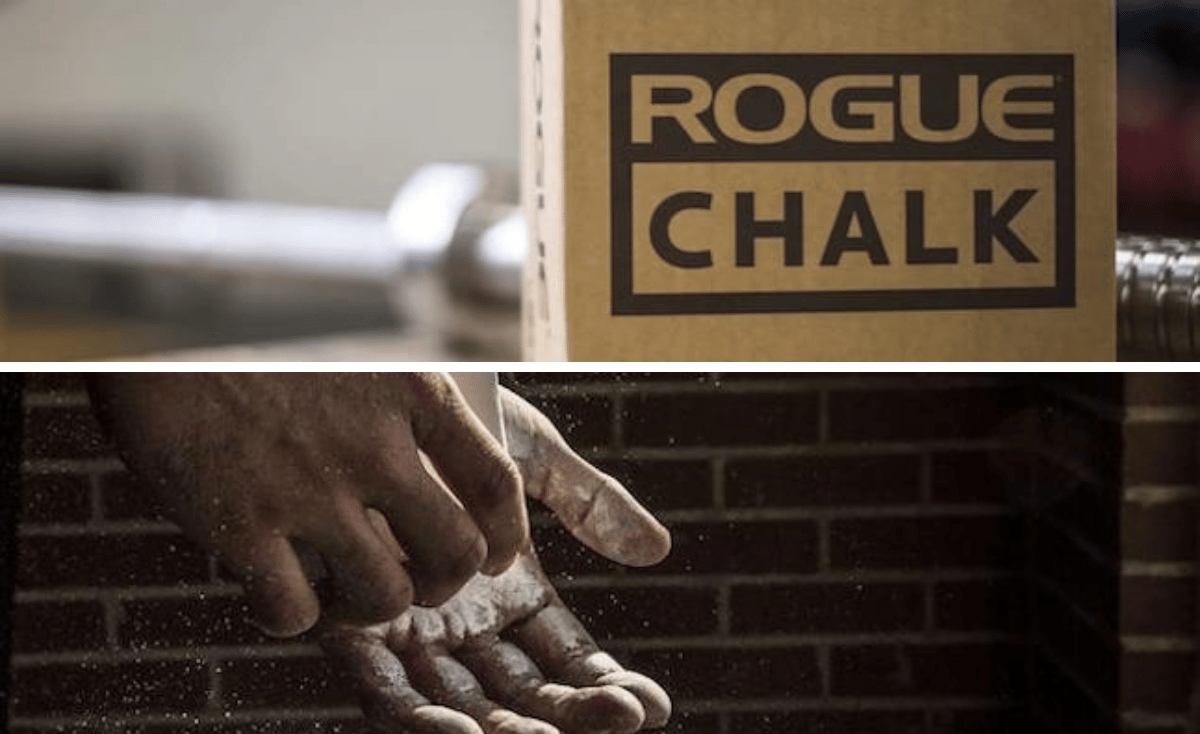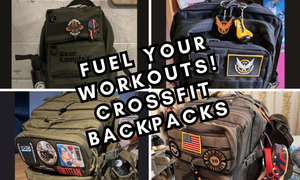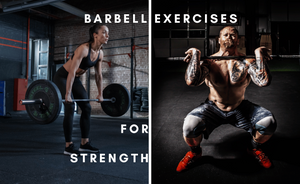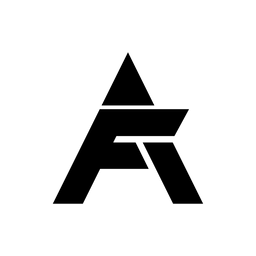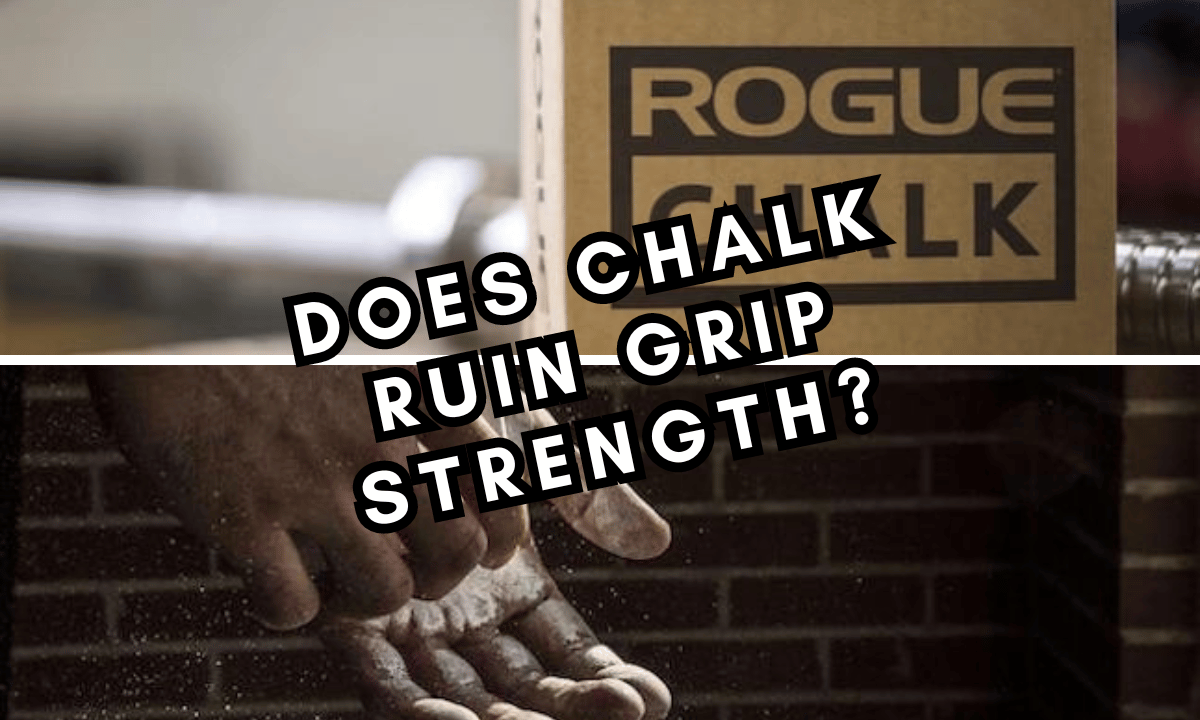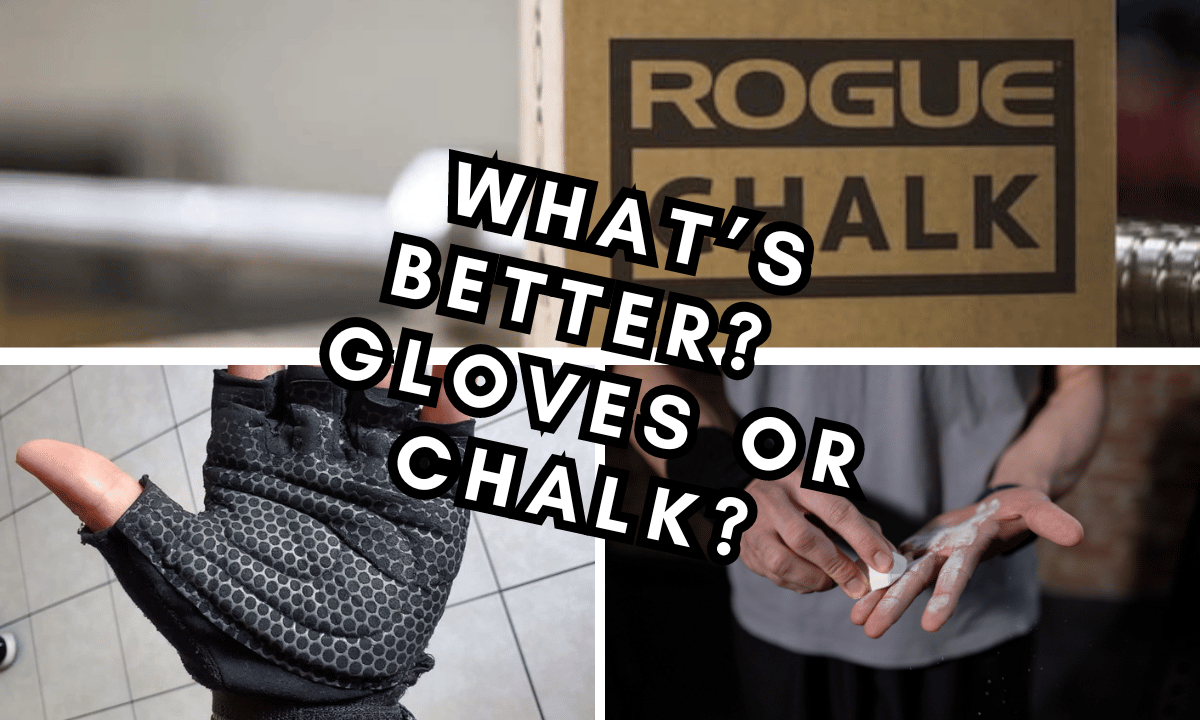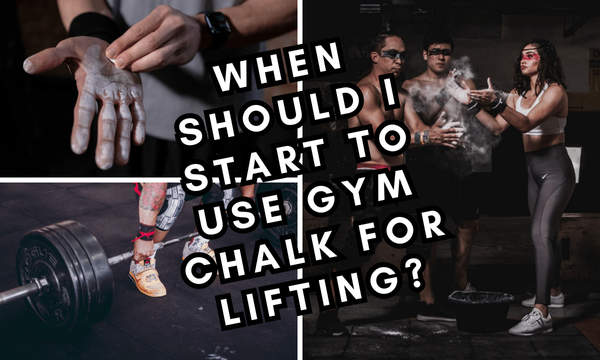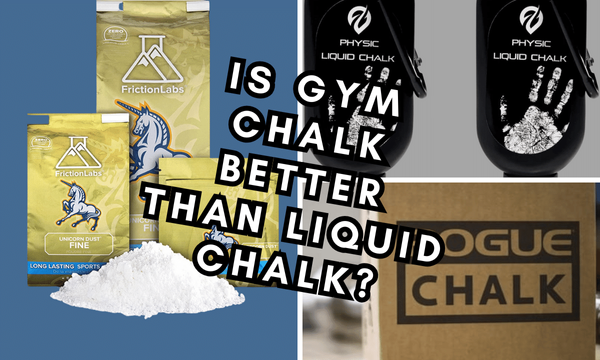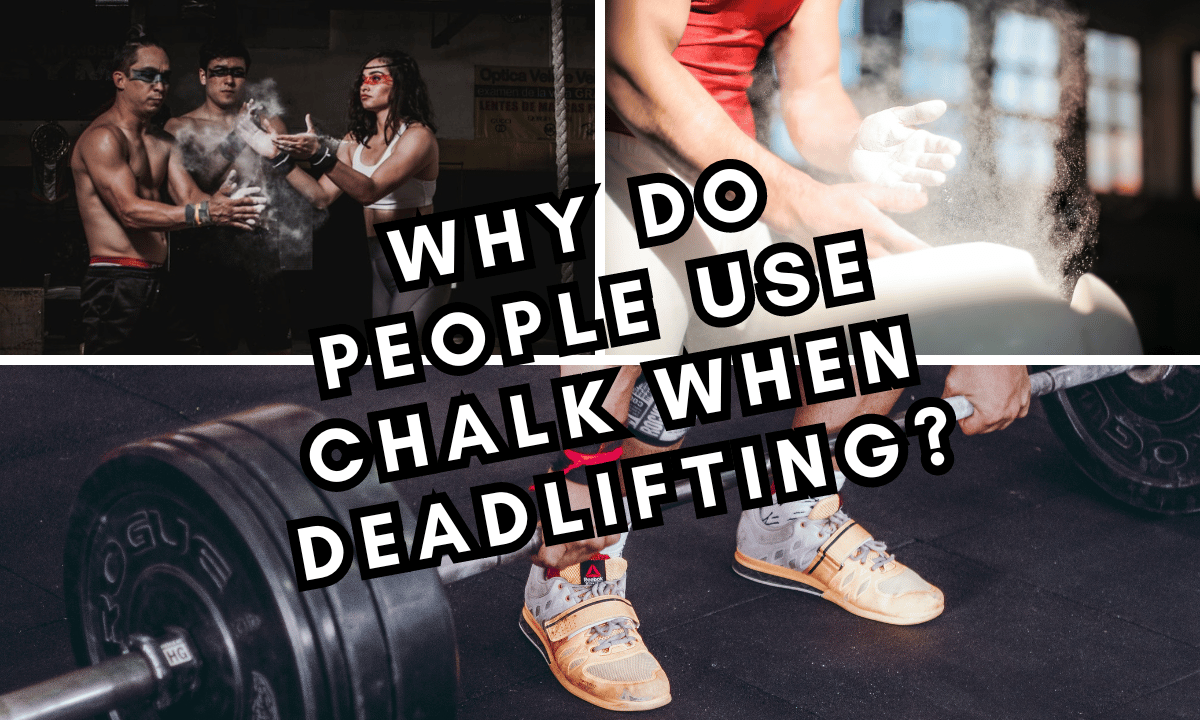Have you ever considered the question, “can you use sidewalk chalk in the gym” to improve your grip? You might be surprised to learn that it’s not the best option.
In this comprehensive guide, we’ll explore the key differences between sidewalk chalk and gym chalk, discuss why sidewalk chalk is less than ideal for gym use, and provide you with better alternatives to enhance your grip and performance.
Key Takeaways
- Gym chalk is composed of magnesium carbonate, providing an effective tool for improving grip strength and performance during workouts.
- Sidewalk chalk is not suitable for gym use due to its water solubility, messiness, and limited performance benefits.
- Alternatives such as liquid chalk, lifting gloves and straps can provide improved grip for a better workout experience while proper usage etiquette should be observed in the gym.
Sidewalk Chalk vs. Gym Chalk: The Key Differences

While both sidewalk chalk and gym chalk share a common purpose - providing grip assistance - they differ in composition, effectiveness, and safety. Sidewalk chalk is composed of calcium carbonate, while gym chalk consists of magnesium carbonate. These differences in composition have significant implications for their performance in the gym.
The distinctions between these two types of chalk warrant a more detailed examination, as chalk is usually categorized based on its composition and usage.
Composition: Calcium Carbonate vs. Magnesium Carbonate
Gym chalk is made of magnesium carbonate, while sidewalk chalk consists of calcium carbonate. The insolubility of magnesium carbonate in water, compared to the solubility of calcium carbonate, is the primary reason for its use in performance chalk. Magnesium carbonate chalk is available in powder, solid block, and liquid forms.
Calcium carbonate, on the other hand, is not as effective for grip enhancement due to its water solubility. This means that when it comes into contact with sweat, it dissolves, losing its effectiveness. This significant difference in their compositions directly affects their performance in the gym.
Effectiveness: Grip and Sweat Absorption
The main component of gym chalk, magnesium carbonate, is designed to improve grip strength and endurance during workouts, making it more effective than regular sidewalk chalk. Gym chalk offers the following benefits:
- Absorbs sweat quickly, reducing the risk of slipping
- Increases friction between hands and equipment
- Provides a secure grip, especially for weightlifters, to prevent injury or slippage during workouts.
In contrast, sidewalk chalk’s water solubility causes it to lose its grip-enhancing properties when exposed to sweat or water. Baby powder, made of talcum powder or cornstarch, is not recommended for gym use as it lacks the same grip-enhancing properties as gym chalk and powder chalk.
Safety: Health Concerns and Gym Etiquette
Although sidewalk chalk is non-toxic, it can still pose health concerns and etiquette issues when used in a gym setting. The dust particles from chalk, combined with other air pollutants in the gym, can lead to respiratory irritation.
Additionally, sidewalk chalk may contain casein, a milk protein that can provoke asthma attacks and allergic reactions in children with milk allergies.
Proper gym etiquette includes adhering to gym rules and guidelines concerning chalk usage. Some gyms may permit the use of regular classroom chalk, while others may not.
In cases where chalk is not allowed, liquid chalk can be a viable alternative solution that produces less mess.
Why Sidewalk Chalk Isn't Ideal for the Gym
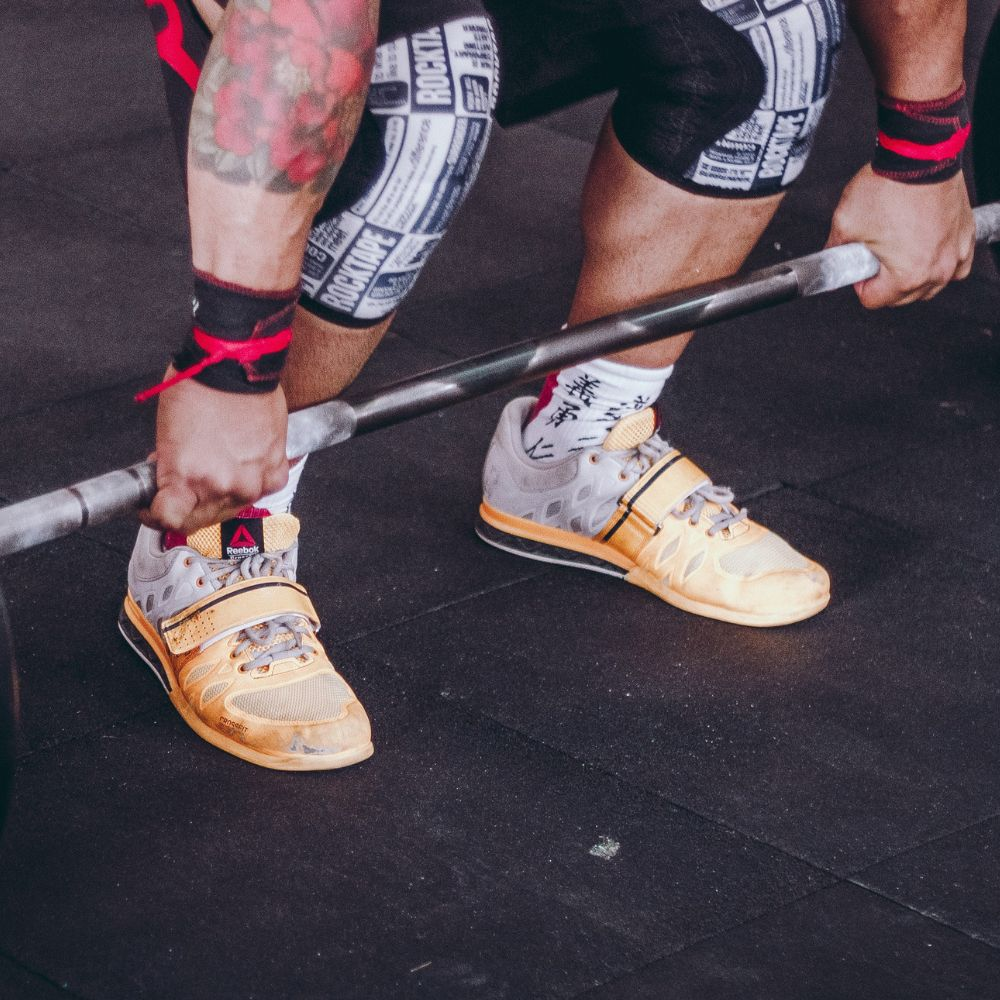
Paragraph 1: Sidewalk chalk’s water solubility, messiness, and limited performance improvement make it unsuitable for gym use. Using sidewalk chalk in the gym can lead to suboptimal grip strength, potential allergens, and a messy environment.
Paragraph 2: These drawbacks deserve a more thorough examination.
Dissolves in Water: Losing Grip During Sweaty Workouts
Sidewalk chalk dissolves in water, making it ineffective for maintaining grip during sweaty workouts. Due to its water solubility, sidewalk chalk fails to provide the necessary traction during perspiration-inducing activities, unlike gym chalk, which is composed of insoluble magnesium carbonate.
Maintaining control and stability while executing exercises during intensive or perspiring workouts is facilitated by a strong grip. This helps prevent slipping or dropping weights, which can result in injuries.
Moreover, a strong grip augments overall fitness and performance, especially for weight lifters, by permitting you to lift heavier weights and perform more demanding exercises.
Inappropriate for Gym Environment: Messiness and Allergens
Paragraph 1: Sidewalk chalk’s messiness can have a detrimental effect on the gym environment. The dust from chalk can easily disperse around the gym, resulting in a messy and unclean look.
Furthermore, if the chalk is not thoroughly removed, it can build up on gym equipment and surfaces, further contributing to the disarray. Chalk dust in the air may also cause irritation and coughing, particularly in those with asthma.
Paragraph 2: In addition to messiness, sidewalk chalk may contain allergens, such as casein, that can trigger asthma attacks and allergic reactions in individuals with milk allergies. These health concerns make sidewalk chalk an inappropriate choice for gym environments.
Limited Performance Improvement: Suboptimal Grip Strength
Sidewalk chalk provides suboptimal grip strength compared to gym chalk, limiting its effectiveness in improving performance.
While sidewalk chalk can still be utilized to enhance fine motor skills and hand strength, it is not as effective as gym chalk for activities such as weightlifting, climbing, and gymnastics.
The primary disadvantage of utilizing sidewalk chalk for grip strength in the gym is the mess it may create. Application of chalk can result in a light dusting of chalk in the surrounding area.
Furthermore, using chalk may lead to blisters and cause hands to become overly dry due to enhanced friction.
Gym Chalk Alternatives: What to Use Instead

If sidewalk chalk isn’t the right choice for you, there are other alternatives to gym chalk, such as gymnastics chalk and lifting chalk, that offer better grip and performance. These include liquid chalk, lifting gloves, and lifting straps. Don’t forget to pack these essentials in your gym bag for a better workout experience.
A closer look at each of these alternatives is merited.
Liquid Chalk
Liquid chalk is a convenient and less messy alternative to regular chalk, including both block chalk and dry chalk, providing improved grip and performance. It is composed of a combination of magnesium carbonate, colophony, and alcohol.
The alcohol in the liquid chalk evaporates quickly, leaving a layer of magnesium carbonate on the skin, thus providing a more powerful and durable grip.
To apply liquid chalk, pour a small amount onto one hand and spread it evenly by rubbing your hands together. Allow it to dry for approximately 15-30 seconds. Liquid chalk is an effective way to avoid making a mess when applying gym chalk, as it is less messy compared to traditional chalk.
Lifting Gloves
Lifting gloves protect hands and improve grip during workouts, making them a suitable alternative to gym chalk. They come in various styles, such as:
- Padded weightlifting gloves
- Full-fingered gloves
- Ventilated gloves
- Half finger gloves
These different styles cater to different needs and preferences.
Lifting gloves provide several benefits for gym performance, such as:
- Improved grip on weights
- Enhanced stability during exercises
- Prevention of calluses
- Protection of hands from blisters
- Added comfort during workouts
The choice between lifting gloves and gym chalk is dependent on individual preference and specific needs.
Lifting Straps
Lifting straps are another alternative to weightlifting chalk, such as gym chalk, that offer additional support and grip during heavy lifts. They are straps crafted from fabric or leather, used to offer additional support and grip during heavy lifts, even when gyms do not allow the use of chalk.
Lifting straps enable a secure and stable grip on the weight, enabling the lifting of heavier weights without worrying about grip strength. Furthermore, they reduce fatigue in the forearm muscles, allowing for greater focus on the targeted muscles during the exercise.
The choice between lifting straps and gym chalk depends on individual objectives and preferences.
Proper Gym Chalk Usage and Etiquette
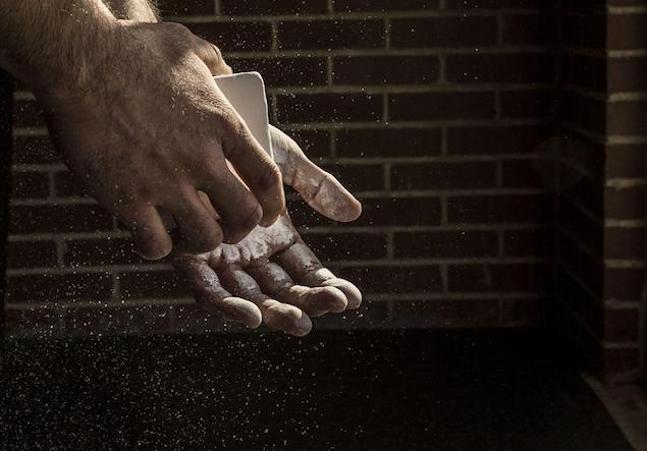
Proper gym chalk usage and etiquette involve applying the right amount of chalk, using the correct technique, and cleaning up after use. Adhering to proper gym chalk etiquette ensures a clean and safe environment for all gym-goers.
The application of gym chalk, including the use of a chalk ball, and maintenance of proper etiquette deserve a detailed explanation.
Applying Chalk: Technique and Amount
To apply gym chalk effectively, use chalk by lightly drawing a block of it on each finger from top to bottom and then across the palm. This ensures that the chalk adheres to your hands and enhances your grip.
There is no specific suggested quantity of gym chalk for a single workout session, as it varies based on individual preference and the exercises being done. Maintaining a secure grip involves using an adequate amount of chalk, but care should be taken to avoid making it excessive or untidy.
Using liquid chalk is an effective way to avoid making a mess when applying gym chalk. To use liquid chalk, ensure that you shake the bottle well. Then, dispense a small amount into one hand and rub your hands together. This provides a no-mess, no-dust grip solution.
Cleaning Up: Respecting Gym Equipment and Fellow Gym-Goers
Cleaning up after using gym chalk is essential in demonstrating respect for gym equipment and fellow gym-goers. Brushing away any residual chalk from the holds and sanitizing any surfaces exposed to chalk are important steps to take after using gym chalk.
Not cleaning up gym chalk promptly can cause a variety of issues, such as clogged and damaged equipment, staining clothing and surfaces, and respiratory problems for fellow gym-goers. By maintaining proper gym chalk etiquette, you contribute to a clean and safe environment for everyone.
The Science Behind Gym Chalk: How It Works
Gym chalk works by leveraging the properties of magnesium carbonate to improve grip and performance during workouts. It:
- Absorbs sweat
- Increases friction between hands and weights
- Enables heavier lifts
- Reduces risk of injury
- Improves overall workout quality
The science behind gym chalk and its impact on grip and performance warrant a more in-depth discussion.
Magnesium Carbonate's Properties

Magnesium carbonate, the main component of gym chalk, absorbs sweat and increases friction between hands and weights. It forms a thin layer of dry powder that helps absorb moisture and keep the hands dry. The benefits of using gym chalk include:
- Absorbing sweat
- Increasing friction between skin and surfaces
- Enhancing grip
- Preventing slipping
The slightly rough texture and hygroscopic nature of magnesium carbonate make it an effective tool for these purposes.
Gym chalk is created from magnesium carbonate by crushing it into a fine powder. This powder is then used as gym chalk to provide a secure grip during workouts, reducing the risk of injury and improving performance.
Impact on Grip and Performance
Gym chalk’s impact on grip and performance allows for heavier lifts, reduced risk of injury, and improved overall workout quality. Chalk can improve grip strength and endurance, enabling safer and more powerful lifts.
It absorbs moisture and improves grip, reducing the risk of slippage during strenuous activities.
Research has demonstrated that the utilization of chalk, including climbing chalk and gym chalk, can boost performance by increasing the friction between the fingers and the equipment, such as weights or climbing holds.
By incorporating gym chalk into your workouts, you can enhance your grip strength, prevent injury, and elevate your overall performance.
Summary
In conclusion, gym chalk provides superior grip and performance compared to sidewalk chalk due to its composition of magnesium carbonate, which absorbs sweat and increases friction between hands and weights.
Sidewalk chalk is not ideal for gym use due to its water solubility, messiness, and limited performance improvement. Instead, alternatives such as liquid chalk, lifting gloves, and lifting straps can provide better grip and performance during workouts.
By understanding the science behind gym chalk and using it properly, you can improve your grip strength, reduce the risk of injury, and enhance your overall workout quality.
Frequently Asked Questions
Is sidewalk chalk the same as gym chalk?
Sidewalk chalk is not the same as gym chalk; while sidewalk chalk is made of calcium carbonate, gym chalk is made of magnesium carbonate and it is essential for effective training.
What are some alternatives to gym chalk?
Gym chalk can be replaced with liquid chalk, gloves and straps for improved grip and performance. These offer varying benefits and should be carefully considered when selecting an appropriate grip aid.
How do I apply gym chalk properly?
To ensure effective application, draw a block of chalk from top to bottom on each finger and across your palm. This will help the chalk adhere to your hands and provide the best grip possible.
How should I clean up after using gym chalk?
It is important to brush away any residual chalk and sanitize surfaces that may have been exposed to chalk after using gym chalk in order to maintain a clean and respectful environment for all gym patrons.
